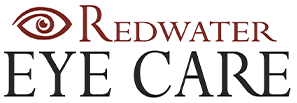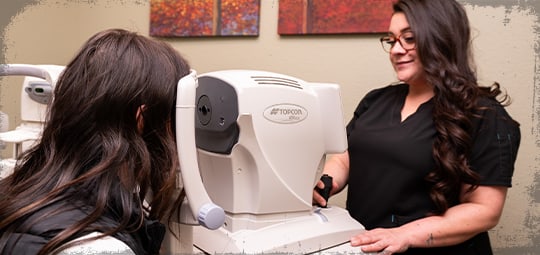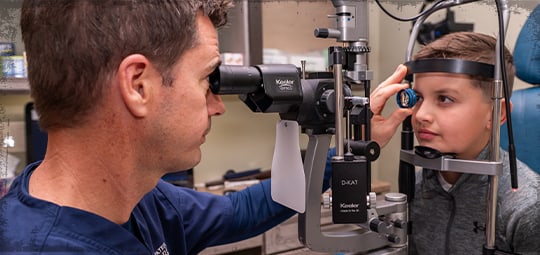Professional & Personalized Care for Medical Eye Conditions
Whether you’re gazing at the skylines or making your way through a long shift at work, your eyes often play a key role in different parts of life. At Redwater Eye Care, we are intentional with the care we provide, and it starts by getting to know your unique story.
Some eye conditions can sneak up on you without noticeable symptoms, so it’s never too early to give your eye health more attention. Routine eye exams can make it possible to detect conditions that affect your vision during their early stages, so we can help manage them before they cause vision loss.
Request AppointmentGet the Care You Need & the Attention You Deserve
At Redwater Eye Care, we can diagnose, manage, and treat a variety of eye diseases. Our goal is to have a positive impact on your life and well-being by focusing on early diagnosis and proactive eye care.
Your family’s eye care needs matter to us. Just like a friend you’ve known for many years, we’re here to support you through every stage of life.
Age-Related Macular Degeneration
Age-related macular degeneration (AMD) happens because of changes to your macula—the part of your eye that controls your central vision. AMD can lead to central vision loss, but it doesn’t cause vision loss across the entire eye.
There are 2 main types of AMD:
- Dry AMD happens when the macula gets thinner as you age. It’s a slow-progressing disease and goes through an early, intermediate, and late stage. Most people with AMD have dry AMD.
- Wet AMD is not as common as dry AMD. It can develop in the late stage of dry AMD when abnormal blood vessels grow in the back of your eye and damage the macula. Wet AMD is a serious issue, and prompt treatment is typically recommended.
What Are the Common Symptoms?
AMD is a progressive disease. This means the symptoms can depend on how advanced it is. People often do not notice any symptoms during the early stages of AMD, and mild symptoms may occur in the intermediate stage.
Symptoms are usually more obvious in the late stage and may include the following:
- Straight lines looking wavy
- Blurred or dark areas near the center of your vision
- Colors appear less bright
- Difficulty seeing in low light
What Causes AMD?
The underlying causes of AMD are typically age-related. Your risk can increase the older you get and it is more commonly seen in people over the age of 50.
AMD can be inherited if it’s in your family history, but certain lifestyle choices may reduce your risk, such as quitting smoking, exercising regularly, maintaining healthy blood pressure and cholesterol levels, and eating healthy foods.
How Is AMD Treated?
Treatment for AMD depends on the stage and type. There is no treatment for early dry AMD. Your optometrist will monitor your eyes with regular eye exams and may recommend certain lifestyle changes.
For intermediate dry AMD, you may be given dietary supplements to slow its progression. For wet AMD, special medications may be able to prevent further vision loss.
Currently, there is no treatment for late-stage dry AMD.
Cataracts
A cataract is a cloudy spot in the lens of your eye. You may not notice it in the beginning, but over time it can lead to blurred or hazy vision. These vision changes can get in the way of performing daily tasks, and if left untreated, cataracts can cause vision loss.
Your risk for cataracts can increase with age and other factors, such as certain health conditions, lifestyle choices, and a family history of cataracts. In many cases, cataracts are an age-related issue, but there are certain factors that may cause cataracts to form earlier in life, such as smoking or drinking alcohol.
What Are the Common Symptoms?
In the early stages of cataracts, you may not notice any symptoms. As they develop, you may notice the following changes to your vision:
- Cloudy or blurry vision
- Faded colors
- Difficulty seeing at night
- Seeing double
- Light sensitivity
- Seeing a halo around lights
- The need to change eyewear prescriptions often
What Causes Cataracts?
Cataracts are typically caused by normal changes in your eye as you get older.
Normally the lens in your eye is clear, allowing light to pass through it. As you age, the proteins in the lens of your eye can break down and clump together. This forms a cloudy spot on your lens—a cataract.
Over time cataracts can grow and cause your vision to become more cloudy and blurred.
How Are Cataracts Treated?
The only way to remove a cataract is through surgery, but that doesn’t need to happen right away. In the early stage, it may be possible to manage the effects of cataracts through small changes at home or by getting a new prescription for glasses or contact lenses.
If your cataracts start interfering with everyday activities, surgery may be recommended to replace the clouded lens with a new artificial lens.
Diabetic Eye Disease
Diabetic eye disease is a group of eye diseases that affect people living with diabetes. Some examples of these are diabetic retinopathy, diabetic macular edema, cataracts, and glaucoma.
Diabetes can damage your eyes over time, leading to poor vision or even blindness. Having diabetes does not mean you’re guaranteed to have eye problems, but managing it can help prevent eye diseases from developing or getting worse.
What Are the Common Symptoms?
The symptoms of diabetic eye diseases can vary depending on the disease affecting you. A full eye exam is a great way to check for any eye diseases caused by diabetes.
As the damage to your eye worsens, you may notice symptoms like:
- Blurry or wavy vision
- Frequently changing vision
- Dark areas in the eye
- Vision loss
- Poor color vision
- Seeing dark spots (floaters) or flashes of light
How Is Diabetic Eye Disease Treated?
Treatment for diabetic eye disease ranges from special medicines to laser treatment or surgery depending on which eye disease you have and what stage it’s in.
We may also offer advice for managing diabetes to prevent eye damage, and we may recommend getting an eye exam every year to closely monitor your eye health and detect diseases early.
Flashes & Floaters
Floaters are small dark spots or lines that float across your vision. For most people, floaters come and go and don’t need treatment. However, if you notice floaters that appear suddenly and don’t go away, that may be a sign of an underlying condition.
Flashes are usually described as lightning streaks or shooting stars in your vision. They appear when there are changes to the jelly-like substance in your eye, known as vitreous gel. These changes cause the gell to pull on your retina, causing flashes, and may be a sign of other underlying conditions.
What Are the Common Symptoms?
With floaters, the dark spots you see may seem to move away when you try to look directly at them. If you have flashes, the bright spots or lines you see may disappear quickly. If those bright spots or lines don’t move after a while, they may be a sign of another condition.
What Causes Flashes & Floaters?
Flashes and floaters are often caused by normal changes to the vitreous gel in your eye. This typically starts to happen as you age. In more serious cases, flashes and floaters may be caused by eye infections, eye injuries, retinal detachment, or other underlying health conditions.
How Are Flashes & Floaters Treated?
The treatment for flashes and floaters can depend on the cause. If they happen occasionally, aren’t bothersome, and are a result of normal aging, treatment may not be necessary.
If you’re seeing flashes and floaters more frequently, they don’t seem to fade away, and are negatively impacting your vision, we recommend scheduling an eye exam so we can look for underlying conditions that may be causing your symptoms and recommend appropriate forms of treatment.
Glaucoma
Glaucoma is a group of eye conditions that damage the optic nerve. The optic nerve is a critical part of your eye because it sends visual information from your eyes to your brain.
Glaucoma is more common in older adults and many people notice no early symptoms, but it can cause vision loss during later stages. It is a progressive disease and there may not be any changes in your vision until it advances.
Regular eye exams can catch conditions like glaucoma early to help prevent or slow down vision loss.
What Are the Common Symptoms?
If you have glaucoma, your symptoms will depend on the type and stage of the disease. During the early stages, symptoms are often very minor. Later on, the symptoms you notice may include:
- Vision loss around the edges of your vision
- Eye pain or pressure
- Headaches
- Halos around lights
- Red eyes
What Are the Main Types of Glaucoma?
- Open-angle glaucoma: This type is often caused by issues with your eye’s drainage canals that force fluid to build up, putting pressure on the optic nerve.
- Acute angle-closure glaucoma: This type develops when the angle between your iris and cornea is too narrow, causing blocked drainage in the eye and increased pressure. Angle-closure glaucoma is considered an emergency and requires prompt eye care.
- Normal tension glaucoma: This form of glaucoma develops even when your eye pressure is at a normal level.
How Is Glaucoma Treated?
There are many ways to treat glaucoma depending on the type and the level of severity. Prescription eye drops may be recommended, but some of the other options include laser therapy or surgery.
In many cases, the goal of treatment is to help improve eye pressure and prevent or slow down vision loss. The exact treatment you receive will vary based on the type of glaucoma affecting your eyes.
Keratoconus
Keratoconus occurs when the natural round shape of your cornea changes and becomes more cone-shaped. This prevents light from focusing on the retina correctly, causing blurred vision. Keratoconus progresses slowly and usually affects both eyes, but can be more prominent in one eye than the other.
Having certain health conditions or a family history of keratoconus can increase your chances of getting this eye disease.
What Are the Common Symptoms?
The symptoms of keratoconus may change as the condition advances. Some examples of common symptoms include:
- Blurred or distorted vision
- Light sensitivity
- Frequent changes in eyeglasses prescriptions
What Causes Keratoconus?
The cause of keratoconus is not fully understood, but the following risk factors may increase your chances of developing the condition:
- Having a close family relative with keratoconus
- Frequent and vigorous eye-rubbing
- Other health conditions, such as asthma, some allergies, Ehlers-Danlos syndrome, and Down syndrome
How Is Keratoconus Treated?
In the early stages of keratoconus, eyeglasses or soft contact lenses may be prescribed to help correct vision. Corneal cross-linking surgery may also take place soon after diagnosis to stabilize the corneal structure and slow down the progression of keratoconus.
If the condition progresses further and the cornea continues to take on an irregular shape, rigid gas-permeable lenses or other specialty contact lenses may be recommended.
Evaluating Eye Health in-Depth with OCT
OCT (optical coherence tomography) is a noninvasive imaging method used to take pictures of the retina. This technology helps us diagnose and manage various eye diseases, such as glaucoma and diabetic retinopathy.
OCT scans can be invaluable for monitoring your eye health and catching problems early. They help us fully understand your eyes and provide treatment recommendations based on your personal eye health.
Get Help Managing Eye Diseases
Whether you have mild symptoms or are suffering from a more serious condition, our team at Redwater Eye Care is ready to help you manage the effects of eye disease and provide long-term support for your vision and eye health.
Routine eye exams and proactive care are crucial for detecting many eye conditions early. Contact us to talk about your eye health and book your next eye exam.
Request AppointmentOur Location
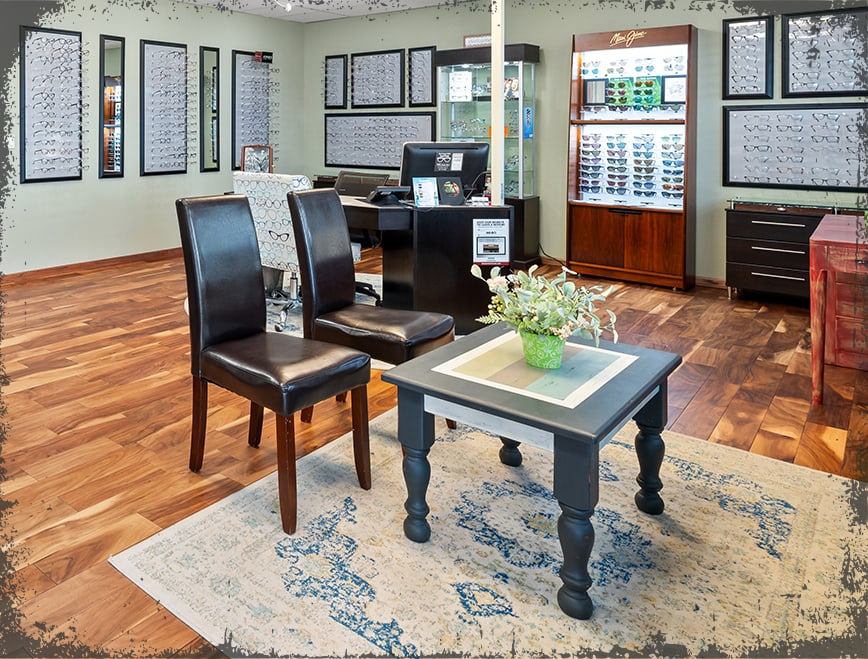
Our Address
- 2398 5th Avenue, Suite 105
- Belle Fourche, SD 57717
Contact Us
- Phone: 605-723-3937
- Email: [email protected]
Clinic Hours
- Monday: 9:00 AM – 5:00 PM
- Tuesday: 8:00 AM – 5:00 PM
- Wednesday: Closed
- Thursday: 8:00 AM – 5:00 PM
- Friday: 8:00 AM – 5:00 PM
- Saturday: Closed
- Sunday: Closed

Our Brands

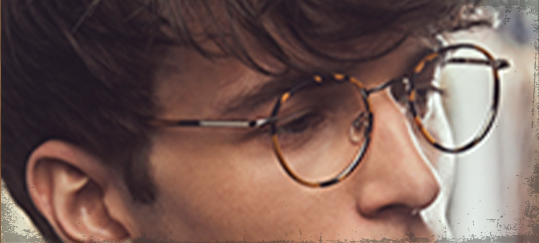

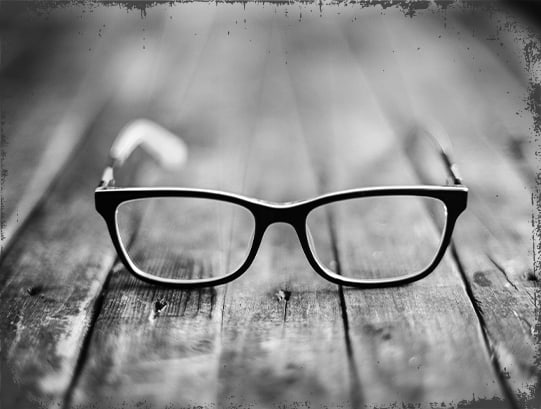




Our Google Reviews
Our Blog
Puffy Eyes and Dark Circles
Eye Health and DiseasesOrdinary swelling around the eyes is due to an excessive accumulation of fluids in the surrounding skin tissue. Puffy eyes and dark circles can occur for many reasons, and a visit to your eye doctor can usually detect the underlying cause behind your puffy eyes. Causes The skin around your eyes is the thinnest skin […]
Bad Habits: Aging Your Eyes
Eye Health and DiseasesDo you feel like your eyes have aged? Some bad habits can make your eyes appear more aged than they are. The best way to preserve your eye health and appearance is to cut these bad habits out of your life!bits out of your life! Rubbing Your Eyes There are tiny blood vessels under their […]
What Is Dry Eye?
Eye Health and DiseasesDry eye syndrome is caused by a chronic lack of moisture and lubrication of the eyes. Your eye’s tears keep the surface of the eye moist and lubricated, as well as washing away dust, debris, and other microorganisms. What causes dry eye? Typically dry eye occurs when there is a problem with your tears. Tears […]
Puffy Eyes and Dark Circles
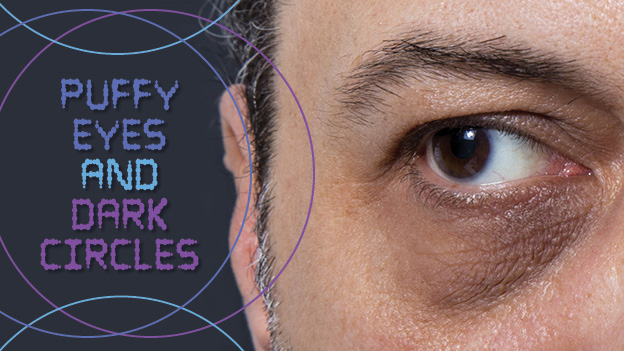
Ordinary swelling around the eyes is due to an excessive accumulation of fluids in the surrounding skin tissue. Puffy eyes and dark circles can occur for many reasons, and a visit to your eye doctor can usually detect the underlying cause behind your puffy eyes. Causes The skin around your eyes is the thinnest skin […]
Bad Habits: Aging Your Eyes
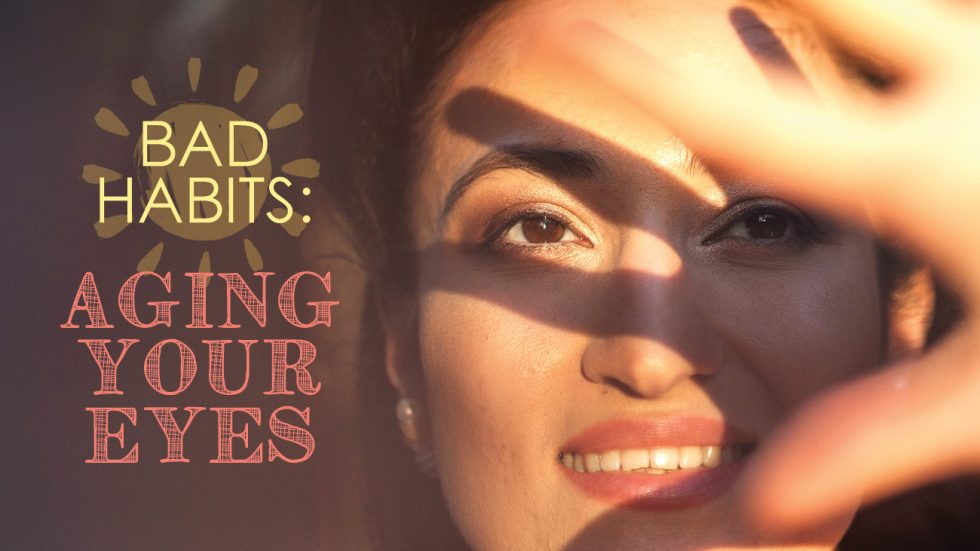
Do you feel like your eyes have aged? Some bad habits can make your eyes appear more aged than they are. The best way to preserve your eye health and appearance is to cut these bad habits out of your life!bits out of your life! Rubbing Your Eyes There are tiny blood vessels under their […]
What Is Dry Eye?
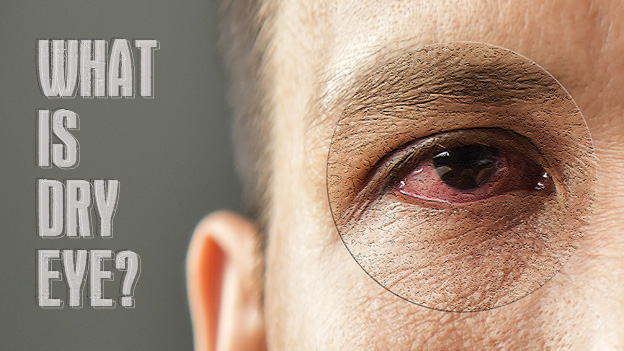
Dry eye syndrome is caused by a chronic lack of moisture and lubrication of the eyes. Your eye’s tears keep the surface of the eye moist and lubricated, as well as washing away dust, debris, and other microorganisms. What causes dry eye? Typically dry eye occurs when there is a problem with your tears. Tears […]
